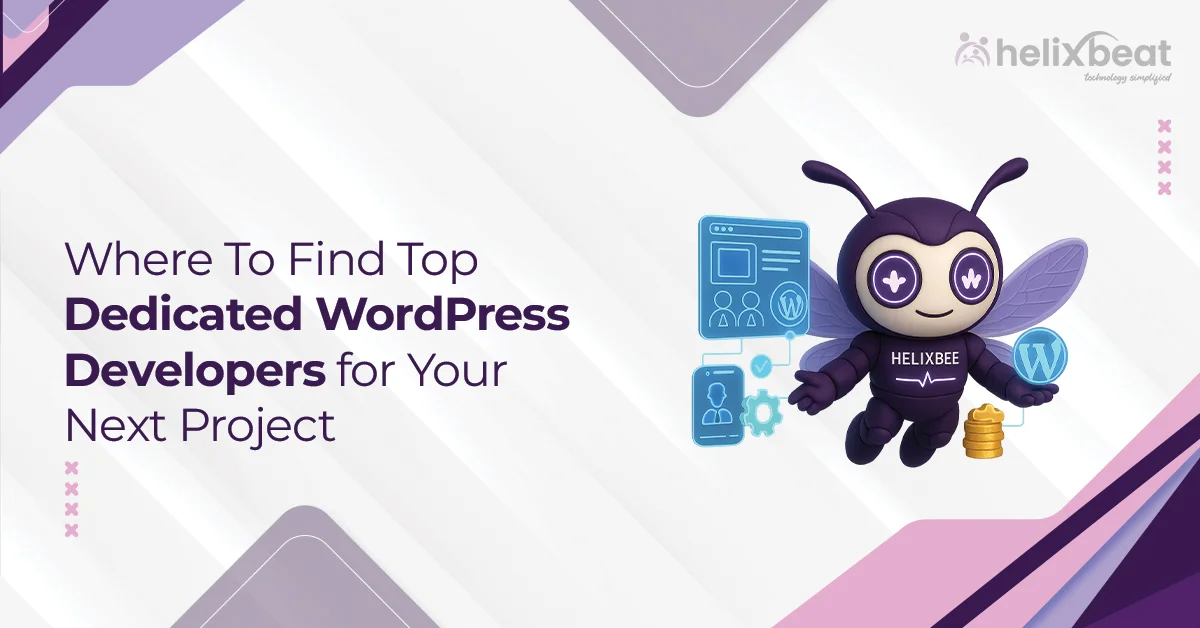Did you know that about 70% of web developers rely on CSS frameworks to make website design easier and faster in 2025? With the growing need for websites that look great on all devices, choosing the best CSS framework is more important than ever.
However, many developers struggle with one common problem: choosing the right framework for their project. With so many options available, it can be hard to pick the one that best fits your needs.
The solution is simple: you need to understand your project requirements and compare the best CSS frameworks for web development. By picking the right framework, you can build websites more quickly, improve website performance, and make sure your site works well on every device.
Let’s see the best CSS frameworks in 2025 and their pros and cons in detail.

Table of Contents
What is CSS Framework?
A CSS framework is a pre-made collection of CSS code that provides ready-to-use design elements and components, such as grids, buttons, forms, and typography. These frameworks help developers create websites faster by offering a set of standardized styles and layouts.
Instead of starting from scratch, developers can use these frameworks to build consistent, responsive websites that look good on all devices. Popular examples of CSS frameworks include Bootstrap and Tailwind CSS, which simplify the process of web design and ensure that websites are both visually appealing and easy to maintain.
Different Types of CSS Frameworks
There are several types of CSS frameworks, each catering to different development needs. Listed below are the most common ones:
1. Component-Based Frameworks
These frameworks, like Bootstrap, provide pre-built UI components such as buttons, forms, and navigation menus. They are easy to use, allowing developers to quickly assemble a website with ready-to-go elements. Component-based frameworks are ideal for developers who need a fast, consistent design without the need for heavy customization.
2. Utility-First Frameworks
Frameworks like Tailwind CSS belong to this category. Instead of offering pre-styled components, they provide small utility classes that allow developers to create custom designs by combining these classes. This approach offers more flexibility and control over the design, but it requires more effort to develop the website’s visual design.
3. CSS-in-JS
With frameworks like Styled Components, this approach allows developers to write CSS directly inside their JavaScript code. This is especially useful in modern JavaScript frameworks like React, where styles are tightly coupled with components. It enables dynamic styling based on the component’s state and helps avoid global styles, making the code more modular and maintainable.
Each type of framework has its strengths, and the choice depends on the project requirements, the level of customization needed, and the developer’s preferred workflow.
CSS framework comparison: In Short
When comparing the best CSS frameworks, it’s essential to consider factors like customization, ease of use, and performance. Some frameworks, like Bootstrap, offer a complete set of pre-designed components, while others like Tailwind CSS focus on utility-first design, giving you more control over styling.
| Framework | Key Features | Strengths | Weaknesses |
| Bootstrap | Pre-built components, responsive grid system, JavaScript plugins | Easy to use, extensive documentation, large community | Heavier file size, may lead to similar-looking websites |
| Tailwind CSS | Utility-first, highly customizable, responsive design support | Flexible, small file size, great for custom designs | Steeper learning curve, can result in writing more code |
| Bulma | Lightweight, simple syntax, responsive grid | Easy to use, clean design, no JavaScript dependencies | Lacks pre-built interactive components |
| Foundation | Modular components, responsive design, customizable | Great for large-scale projects, flexible | Can be complex for beginners, heavier file size |
| Materialize | Material Design components, pre-built UI elements | Good for Material Design apps, responsive design | Limited customization, heavy reliance on JavaScript |
| UIkit | Modular components, clean design, lightweight | Easy to integrate, lots of customization options | Smaller community, fewer resources compared to Bootstrap and Tailwind |
| Semantic UI | Human-readable HTML, predefined components | Rich set of components, visually appealing | Can be bloated, not as flexible as utility-first frameworks |
7 Best Frameworks for Web Development
As web development continues to evolve, the right CSS framework can drastically enhance your website’s performance, design, and user experience. Here are the seven best CSS frameworks, each offering unique strengths for modern web projects:
1. Bootstrap 5
Bootstrap remains one of the top frameworks due to its robust set of pre-designed components and responsive grid system. The recent update in Bootstrap 5 has removed jQuery, making it faster and more lightweight than before. It’s ideal for developers looking for a comprehensive, easy-to-use solution that’s supported by an active community and extensive resources.
Best For: Quick, responsive design with a modular approach for creating functional websites rapidly.
2. Tailwind CSS
Tailwind CSS continues to dominate due to its utility-first approach, which offers maximum customization with minimal code. Developers use small utility classes to compose complex, unique designs, allowing for total control over the layout and appearance. Tailwind is unmatched when it comes to scalability and reducing the need for redundant styles.
Best For: Custom, creative designs where flexibility and scalability are the top priority.
3. Bulma
Known for its simplicity and clean syntax, Bulma is lightweight and offers a fully responsive grid system out of the box. It’s ideal for developers who need a minimalistic design and fast development turnaround. Bulma’s focus on ease of use and a straightforward approach makes it the top choice for smaller projects and startups.
Best For: Fast, easy-to-implement projects with minimal overhead.
4. Materialize
Materialize takes the Material Design philosophy of Google and implements it beautifully in web development. With a focus on seamless UI/UX, Materialize is a perfect fit for applications aiming for clean, visually consistent designs across platforms. Its pre-built components reflect modern design standards, enhancing mobile-first approaches.
Best For: Web apps that need to follow Material Design guidelines, with emphasis on mobile responsiveness.
5. Foundation
Foundation by Zurb has always been known for being a highly flexible and customizable framework. It has cemented its place as one of the best frameworks for large-scale, complex websites and applications. Its modular approach and mobile-first philosophy make it ideal for enterprise-level projects where stability and extensive customization are required.
Best For: Large, enterprise-level applications needing a highly customizable, mobile-first framework.
6. UIkit
UIkit is an often-overlooked framework, but its comprehensive set of modular components and lightweight structure make it a perfect choice for developers focused on minimal overhead and flexibility. It’s especially useful for projects that require unique customizations but without the complexity of other frameworks.
Best For: Customizable applications where lightweight design and modularity are key factors.
7. Semantic UI
Semantic UI uses human-readable HTML to make development intuitive, which greatly speeds up the process for developers and designers alike. Semantic UI is still a powerful option for creating rich, interactive websites and applications with a high-quality user interface. It’s particularly well-suited for projects that demand clear code semantics and rapid front-end development.
Best For: Developers who prioritize readability and accessibility, while still needing rich, interactive components.
These seven best CSS frameworks are at the forefront of modern design and development, offering solutions tailored to different project needs.
Whether you’re looking for something quick and easy like Bootstrap or a more customizable, utility-first solution like Tailwind CSS, these frameworks provide the flexibility and tools needed to create modern, responsive websites.
Advantages and Disadvantages of each CSS Framework
Choosing the best CSS framework involves considering both the advantages and disadvantages. Some frameworks, like Bootstrap, offer ready-made components for quick setups, while others like Tailwind CSS provide more flexibility but require greater customization.
| Framework | Advantages | Disadvantages |
| Bootstrap | Comprehensive set of pre-built components and grid system | Can result in websites looking similar unless heavily customized |
| Mobile-first, responsive design out-of-the-box | Larger file size can impact performance | |
| Tailwind CSS | Highly customizable with utility-first approach | Steeper learning curve for beginners |
| Small file size, helps with performance | Can lead to writing more code compared to component-based frameworks | |
| Bulma | Lightweight, clean, and simple syntax | Lacks built-in JavaScript components for interactive elements |
| Fully responsive grid system | Limited community support compared to Bootstrap | |
| Materialize | Follows Google’s Material Design guidelines for clean, modern design | Can feel rigid due to Material Design’s specific design principles |
| Pre-built components and easy to use | Limited customization without breaking the Material Design flow | |
| Foundation | Highly customizable, flexible, and robust | Can be complex for beginners |
| Modular approach allows you to include only the components you need | Heavier file size due to extensive features | |
| UIkit | Lightweight and modular, offering flexibility | Smaller community, fewer resources compared to Bootstrap or Tailwind |
| Simple and easy to integrate with other libraries | Can be less powerful in larger projects | |
| Semantic UI | Human-readable HTML for ease of use | Can be bloated and slow with unnecessary components |
| Rich set of components for interactive websites | Less flexible than utility-first frameworks |
Final Words
Choosing the best CSS framework is important for building modern, responsive websites that perform well across devices. Each framework offers its own unique strengths and potential drawbacks, so understanding your requirements is key to making the right choice.
At Helixbeat, we understand that selecting the right CSS framework is key to building a website that’s not only visually stunning but also optimized for performance. Our team of experts will built outstanding web and app development solutions that align perfectly with your business objectives.
Let us help you choose the right CSS framework and make sure that your website stands out with speed, responsiveness, and a smooth user experience. Get a free quote.
FAQ
1. What are the Bootstrap CSS advantages?
Bootstrap CSS offers several advantages, including a responsive grid system, pre-designed UI components, and a mobile-first approach. It helps developers create websites quickly with minimal effort. Additionally, Bootstrap is well-documented, easy to use, and supported by a large community, making it a great choice for both beginners and experienced developers.
2. What is the best CSS framework for responsive design?
The best CSS framework for responsive design is Bootstrap, thanks to its built-in grid system and mobile-first approach. It automatically adjusts layouts for different screen sizes, ensuring your website looks great on all devices. Other frameworks like Tailwind CSS and Foundation also offer responsive design features but require more customization.
3. What is the fastest CSS framework?
The fastest CSS framework is typically Bulma due to its lightweight nature. Unlike other frameworks, it doesn’t include JavaScript components, which makes it faster and more lightweight. Tailwind CSS is also known for its speed because of its utility-first approach, which avoids unnecessary styles and focuses on performance.
4. Which CSS framework is best in 2025?
The best CSS framework in 2025 depends on your project needs. For rapid prototyping and pre-built components, Bootstrap is still a top choice. For flexibility and custom designs, Tailwind CSS stands out. For simplicity and lightweight projects, Bulma remains popular. It’s important to choose a framework based on your specific design and performance requirements.
5. Why is Tailwind CSS better than Bootstrap?
Tailwind CSS is considered better than Bootstrap by some developers due to its utility-first approach, which provides more flexibility in creating unique designs. Unlike Bootstrap, which uses pre-built components that may make sites look similar, Tailwind allows for highly customized and clean code, enabling developers to craft fully personalized designs.














